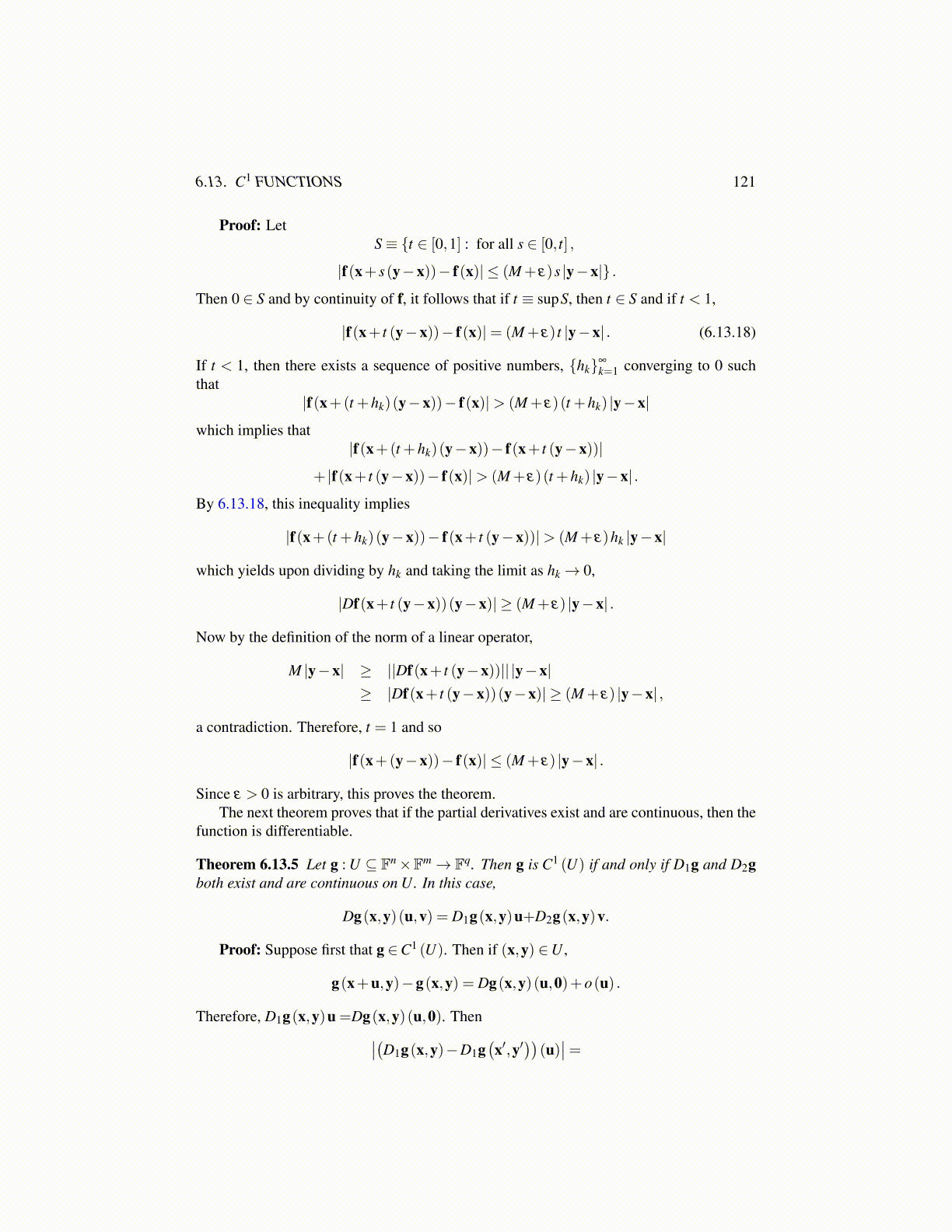
6.13. C1 FUNCTIONS 121
Proof: LetS≡ {t ∈ [0,1] : for all s ∈ [0, t] ,
|f(x+ s(y−x))− f(x)| ≤ (M+ ε)s |y−x|} .
Then 0 ∈ S and by continuity of f, it follows that if t ≡ supS, then t ∈ S and if t < 1,
|f(x+ t (y−x))− f(x)|= (M+ ε) t |y−x| . (6.13.18)
If t < 1, then there exists a sequence of positive numbers, {hk}∞
k=1 converging to 0 suchthat
|f(x+(t +hk)(y−x))− f(x)|> (M+ ε)(t +hk) |y−x|
which implies that|f(x+(t +hk)(y−x))− f(x+ t (y−x))|
+ |f(x+ t (y−x))− f(x)|> (M+ ε)(t +hk) |y−x| .
By 6.13.18, this inequality implies
|f(x+(t +hk)(y−x))− f(x+ t (y−x))|> (M+ ε)hk |y−x|
which yields upon dividing by hk and taking the limit as hk→ 0,
|Df(x+ t (y−x))(y−x)| ≥ (M+ ε) |y−x| .
Now by the definition of the norm of a linear operator,
M |y−x| ≥ ||Df(x+ t (y−x))|| |y−x|≥ |Df(x+ t (y−x))(y−x)| ≥ (M+ ε) |y−x| ,
a contradiction. Therefore, t = 1 and so
|f(x+(y−x))− f(x)| ≤ (M+ ε) |y−x| .
Since ε > 0 is arbitrary, this proves the theorem.The next theorem proves that if the partial derivatives exist and are continuous, then the
function is differentiable.
Theorem 6.13.5 Let g : U ⊆ Fn×Fm→ Fq. Then g is C1 (U) if and only if D1g and D2gboth exist and are continuous on U. In this case,
Dg(x,y)(u,v) = D1g(x,y)u+D2g(x,y)v.
Proof: Suppose first that g ∈C1 (U). Then if (x,y) ∈U ,
g(x+u,y)−g(x,y) = Dg(x,y)(u,0)+o(u) .
Therefore, D1g(x,y)u =Dg(x,y)(u,0). Then∣∣(D1g(x,y)−D1g(x′,y′
))(u)∣∣=